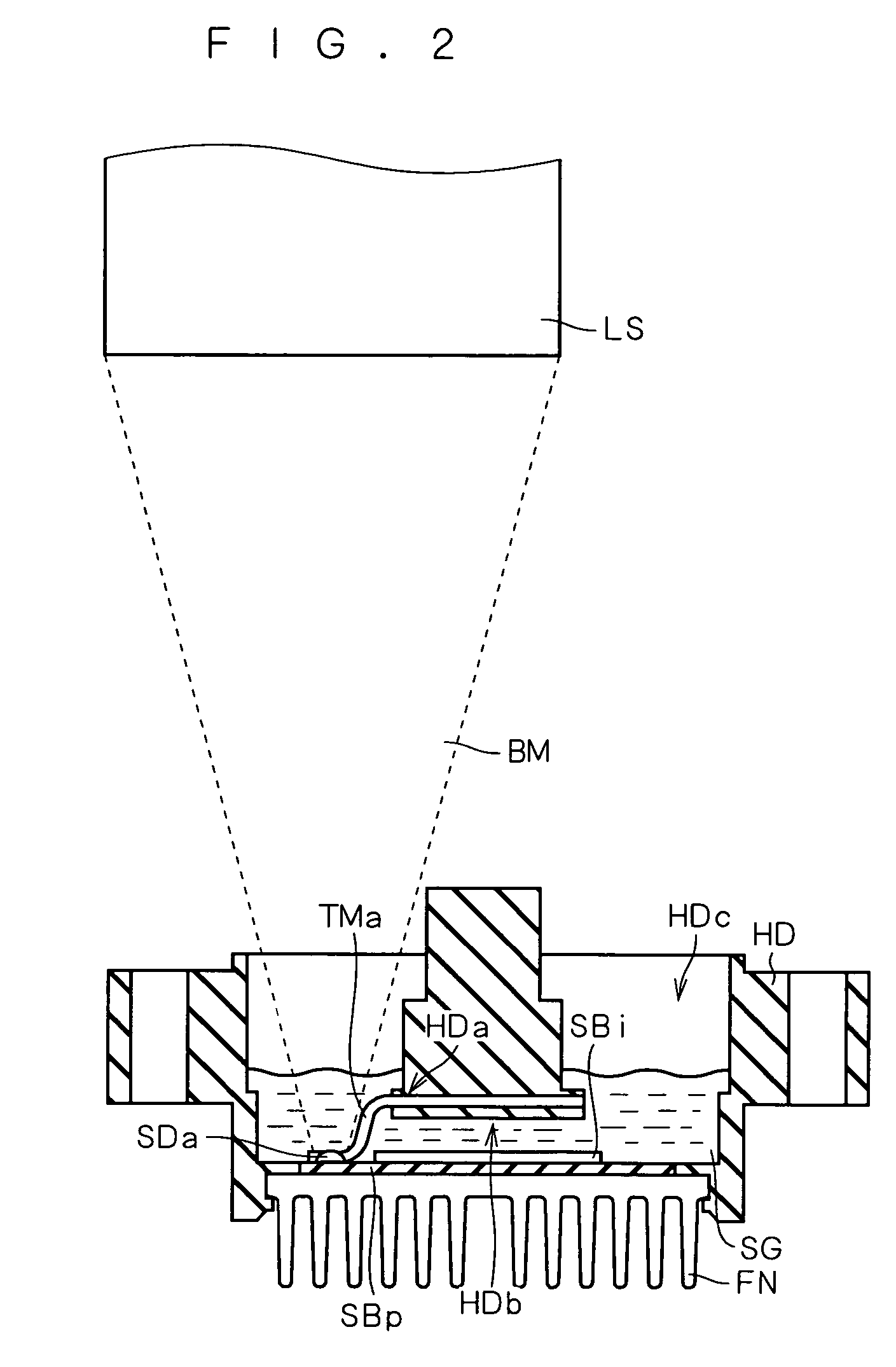Method of joining terminals by soldering
a technology of joining terminals and soldering, which is applied in the direction of soldering apparatus, sustainable manufacturing/processing, final product manufacturing, etc., can solve the problems of complicated manufacturing line configuration, high cost and large-scale equipment, and easy inhibition of hardening of silicone gel, so as to achieve the effect of controlling the gas supply
- Summary
- Abstract
- Description
- Claims
- Application Information
AI Technical Summary
Benefits of technology
Problems solved by technology
Method used
Image
Examples
Embodiment Construction
[0026]A preferred embodiment of the present invention provides a method of joining terminals by soldering, wherein solder joints of terminals are immersed in molten solder utilizing a springback phenomenon that occurs at flat portions of the terminals, and laser soldering is performed using a gas chamber that is made of a material which transmits a laser beam at least in part.
[0027]The utilization of the springback phenomenon eliminates the need to use a jig for pressing solder joints of terminals into molten solder and thus eliminates the need to provide an insertion port for such a jig within a gas chamber. Also, there is no need to provide an opening for the admission of a laser beam within a gas chamber. This results in the realization of a terminal joining method that reduces the occurrence of gas leakages and that allows control of increasing gas supply.
[0028]FIG. 1 is a top plan view showing the structure of a vehicle alternator component CS to which the terminal joining meth...
PUM
| Property | Measurement | Unit |
|---|---|---|
| optical axis | aaaaa | aaaaa |
| concentration | aaaaa | aaaaa |
| diameter | aaaaa | aaaaa |
Abstract
Description
Claims
Application Information
 Login to View More
Login to View More - R&D
- Intellectual Property
- Life Sciences
- Materials
- Tech Scout
- Unparalleled Data Quality
- Higher Quality Content
- 60% Fewer Hallucinations
Browse by: Latest US Patents, China's latest patents, Technical Efficacy Thesaurus, Application Domain, Technology Topic, Popular Technical Reports.
© 2025 PatSnap. All rights reserved.Legal|Privacy policy|Modern Slavery Act Transparency Statement|Sitemap|About US| Contact US: help@patsnap.com



